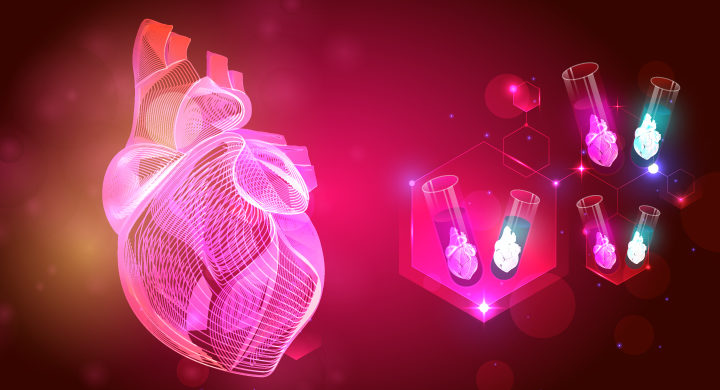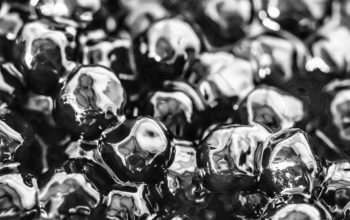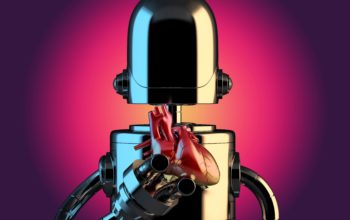
Date: 25th May 2021

Globally cardiovascular disease is the top cause of death and malformations of the heart are the most common human birth defects. The heart is the first functional organ to develop in the embryo, and is one of the most difficult to model in vitro. Whilst, we know much about how the cardiac lineage is specified during embryogenesis it is still unclear as to how signalling directs the different cell types to self-organise into layers and form the complex multi-chambered shape of the heart, or indeed how they fail to cause cardiac defects. Model systems such as organoids are instrumental in dissecting the mechanisms of patterning and morphogenesis, for drug screening, and understanding disease pathology. However, cardiac organoid or cardioids, that recapitulate cardiac-specific self-organisation are lacking. Now, researchers have developed the world’s first human self-organising chamber-like cardioids, that recapitulate heart lineage architecture, beat and form a cavity, using human pluripotent stem cells (hPSC) and key cardiogenic signalling pathways.
Self-organising organoids have been developed for almost all major organs, with the exception of the heart. Although, bioengineering approaches have been successfully applied to create artificially engineered heart tissue this has required scaffolds or supports and does not mimic the natural self-organisation of the heart that gives it its architecture, such as chambers, a cavity, and three layers – endocardium, myocardium and epicardium. This means that modelling human cardiogenesis and heart disease has been limited.
Now, researchers at the Institute of Molecular Biotechnology of the Austrian Academy of Sciences, Austria, led by Sasha Mendjan have developed cardioids that form a cavity and recapitulate heart lineage architecture, they identify instructive signals for cavity formation, and upon cryoinjury cardioids show hallmarks of regeneration and heart disease.
Taking cues from the developmental differentiation program the team started to sequentially specify hPSCs into mesoderm, to cardiac mesoderm then to cardiomyocyte progenitors using key cardiogenic signalling pathways – ACTIVIN, bone morphogenic protein (BMP), fibroblast growth factor (FGF), retinoic acid (RA), and WNT. They performed the cardiac differentiation in a 3D non-adherent high-throughput culture, and were able to produce rapid and reproducible self-assembled beating cardioids which contained a cavity.
Gene Ontology (GO)-term analysis of the cardioid showed they exhibited gene expression patterns of heart morphogenesis and development, which were significantly upregulated over control 2D-differentiated cardiomyocytes and had improved functionality. Cardioid cultures could be kept for 3 months, and retained a steady level of beating for this time, indicating this was a viable platform for research. Further analysis of the cardioids showed they had an early left ventricular chamber-like identity.
With the system set up, the team then used it to study the mechanisms of human cardiogenesis and heart disease. For example they found that cavity morphogenesis was governed by a mesodermal WNT-BMP signalling axis and required its target HAND1. WNT, ACTIVIN, and VEGF coordinated endothelial and myocardial self-organisation.
There is currently much interest and research being invested into heart regeneration. Whilst the embryonic heart can regenerate upon injury, in many adult organisms including humans this does not occur, and understanding the differences will be crucial if we are to stimulate regeneration in the adult. Cardioids may offer a valuable tool to decipher these regenerative cues. To address this, the team cryoinjured the cardioids, a well-studied method for injuring the heart. They found the cryoinjury initiated an in vivo-like fibronectin and collagen accumulations, suggesting that the cardioids were capable of mimicking an important early aspect of regenerative and fibrotic responses.
Conclusions and future applications
The team here have established a high-throughput human cardioid platform with the capacity for intrinsic self-organisation into patterned layers and 3D structures. They show that this resource offers a powerful tool to model the developmental mechanisms of the three major cardiac lineages and to study injury responses.
Senior author Sasha Mendjan is also co-founder of HeartBeat.bio, a biotech company focusing on cardiac drug discovery based on heart organoids. They hold an exclusive license to develop cardioids into a human 3D drug screening platform tackling cardiomyopathies, cardiotoxicity and heart failure. This major scientific breakthrough in the cardiac field, uses the developmental principles of self-organisation, and as the system is physiological, reproducible and highly scalable, they envisage it will open up huge possibilities for cardiac drug discovery. They will be using the platform to screen compound libraries to discover new drugs to treat disease such as heart failure and cardiomyopathies with the aim of meeting unmet clinical needs.
The team also aim to increase the complexity of their cardioids, adding other types of cells which migrate into the heart later during development. It is hoped that this evolution of the cardioids will more closely mimic the neonatal/adult heart and will more faithfully recapitulate most cardiac defects.
Studying cardioids offers a unique insight into the developmental processes involved during heart formation, and should offer us a wealth of information that will accelerate regenerative and other bioengineering efforts. We have recently seen hybrids of tissue engineering and regenerative medicine to create a tri-tube heart valve that grows with the recipient, with almost no calcification or blood clotting that can occur with current valve replacements. Advances are also being made in 3D bioprinting of hearts, and biomimetic hydrogels that can stimulate cardiac repair after a heart attack. Understanding signals involved during cardiogenesis should feedback to this type of research, helping us to unravel the instructive signals and allowing us to harness them for treatment of heart defects and disease.
For more information please see the press release from HeartBeat.bio
Hofbauer, P., Jahnel, S.M., Papai, N., Giesshammer, M., Deyett, A., Schmidt, C., Penc, M., Tavernini, K., Grdseloff, N., Meledeth, C., et al. Cardioids reveal self-organizing principles of human cardiogenesis. Cell.
https://doi.org/10.1016/j.cell.2021.04.034


